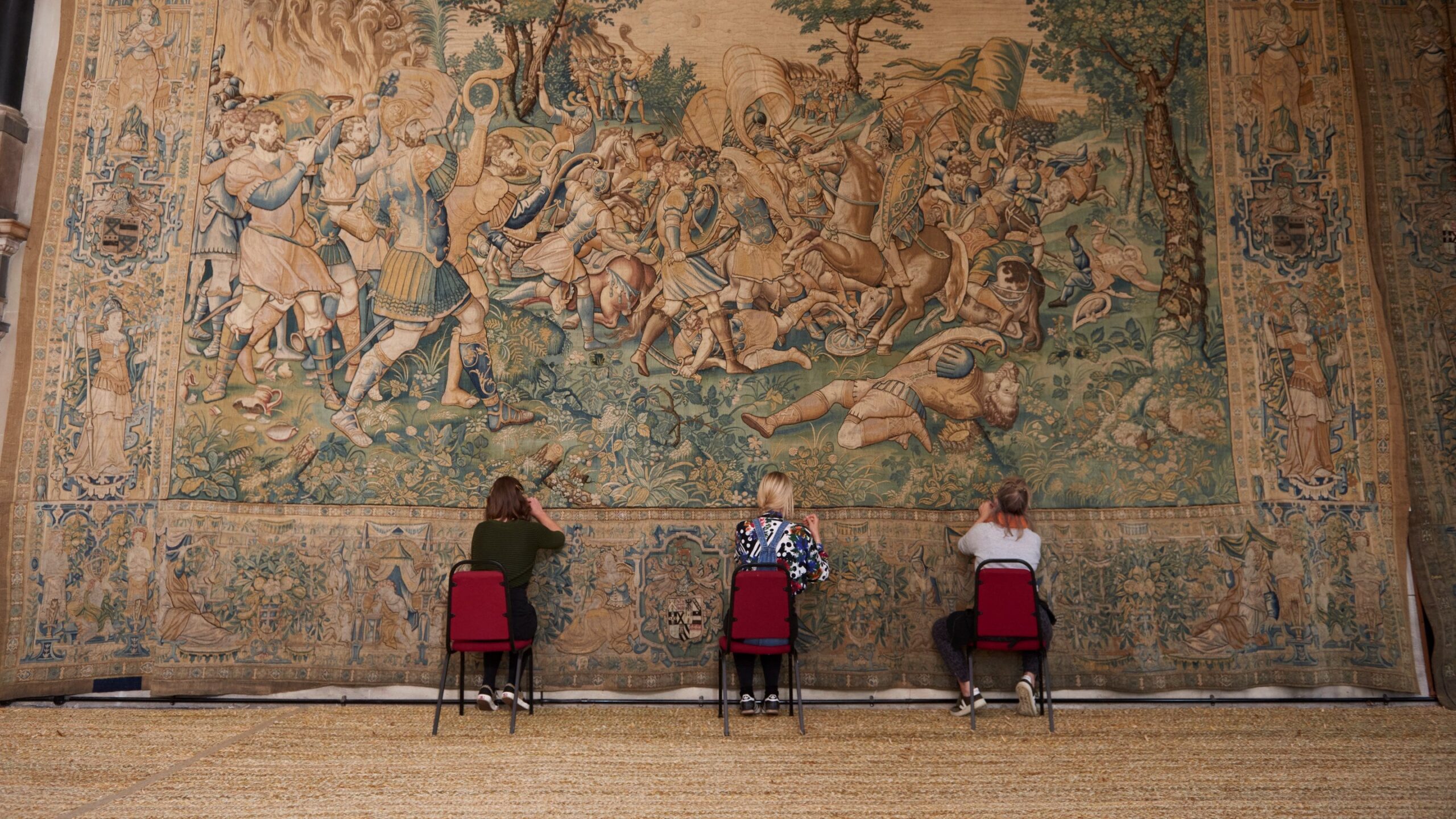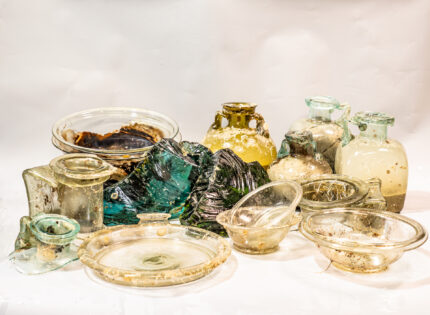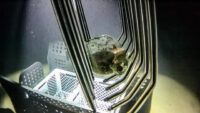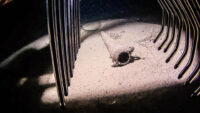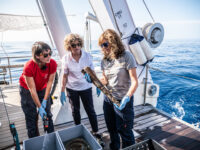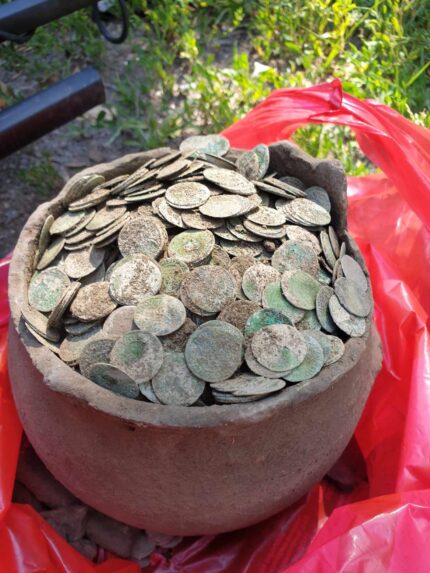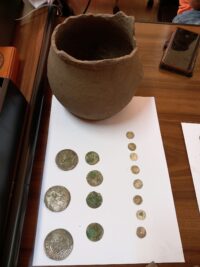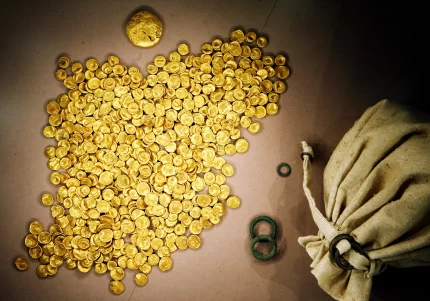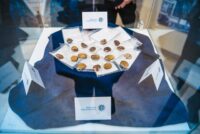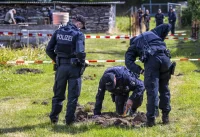 The National Trust’s longest-running textile conservation project — the cleaning and repair of 13 of Britain’s oldest and largest tapestry series — has come to an end more than 22 years after it began. The Gideon Tapestry set covers 230 feet, the full length of the long wall of the Long Gallery at Hardwick Hall in Derbyshire, and each tapestry took thousands of hours of stitching and two years to clean and stabilize. They are now hanging again, reunited for the first time in more than two decades.
The National Trust’s longest-running textile conservation project — the cleaning and repair of 13 of Britain’s oldest and largest tapestry series — has come to an end more than 22 years after it began. The Gideon Tapestry set covers 230 feet, the full length of the long wall of the Long Gallery at Hardwick Hall in Derbyshire, and each tapestry took thousands of hours of stitching and two years to clean and stabilize. They are now hanging again, reunited for the first time in more than two decades.
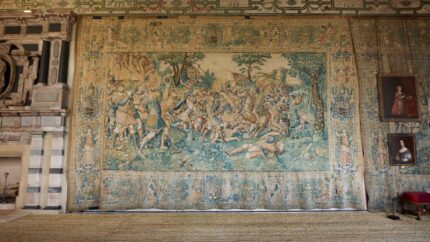 The tapestries depict scenes from the story of Gideon, one of the Judges from the eponymous book in the Old Testament. Called by God to deliver Israel from the Midianites, Gideon led an elite army of 300 of the best Israelite warriors against them and won. He was offered a crown but declined the kingship, declaring that only God could rule the people of Israel.
The tapestries depict scenes from the story of Gideon, one of the Judges from the eponymous book in the Old Testament. Called by God to deliver Israel from the Midianites, Gideon led an elite army of 300 of the best Israelite warriors against them and won. He was offered a crown but declined the kingship, declaring that only God could rule the people of Israel.
The Gideon Tapestries were woven in 1578 for Sir Christopher Hatton whose coat of arms and initials were woven into the original tapestry. They were made at Oudenaarde in Belgium by an unknown weaver whose mark was a six-pointed star. The entire workshop would have been involved in the production of monumental pieces like this. Apprentices would work on the background while master weavers stitched the difficult details like faces. The design was inspired by the 13 Gideon tapestries bought by Cosimo I de’ Medici in Brussels in 1561. Today only three of the Medici series survive, and two of them match two of the Hardwick tapestries.
 After Sir Christopher’s death, it was bought by the formidable Elizabeth, Countess of Shrewsbury, known as Bess of Hardwick, in 1592 for what was then the huge sum of £326. She had patches woven of her own coat of arms and stitched them over his. The tapestry was the backdrop to dozens of portraits hung over it on the gallery’s long wall for centuries.
After Sir Christopher’s death, it was bought by the formidable Elizabeth, Countess of Shrewsbury, known as Bess of Hardwick, in 1592 for what was then the huge sum of £326. She had patches woven of her own coat of arms and stitched them over his. The tapestry was the backdrop to dozens of portraits hung over it on the gallery’s long wall for centuries.
Hundreds of years of exposure to the sunlight, soot and dust were not kind to the tapestries. In 2001, the National Trust took on the many challenges of a full conservation of these massive tapestries. Even simply taking them down from the wall required tower scaffolding, never mind cleaning and repairing them. The largest of the tapestries, number 11 in the series, required a trolley, a level wooden track and rolling it vertically with turn handles. The Gideon Tapestry project is the largest textile conservation project in the National Trust’s history.
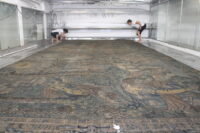 The lower and top borders of the tapestries were unstitched to make the mainfield easier to transport, and the hessian lining removed revealing the brilliant original color of the tapestry on the underside. The rolled tapestries were transported National Trust’s in-house Textile Conservation Studio in Norfolk for initial documentation and preparation before being sent to a specialist facility in Belgium for wet cleaning. Upon their returns, textile conservators in Norfolk repairs holes, restitched the borders and Bess of Hardwick’s coat of arms patches.
The lower and top borders of the tapestries were unstitched to make the mainfield easier to transport, and the hessian lining removed revealing the brilliant original color of the tapestry on the underside. The rolled tapestries were transported National Trust’s in-house Textile Conservation Studio in Norfolk for initial documentation and preparation before being sent to a specialist facility in Belgium for wet cleaning. Upon their returns, textile conservators in Norfolk repairs holes, restitched the borders and Bess of Hardwick’s coat of arms patches.
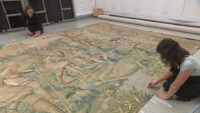 The tapestries were individually rehung in Hardwick Hall after conservation was complete at each stage of the process. The thirteenth tapestry has just been rehung, bringing the whole gang back together again.
The tapestries were individually rehung in Hardwick Hall after conservation was complete at each stage of the process. The thirteenth tapestry has just been rehung, bringing the whole gang back together again.
The portraits will eventually return as well, but for the next two years the Gideon Tapestry series is being hung on its own so visitors can see it in all its massive glory.
